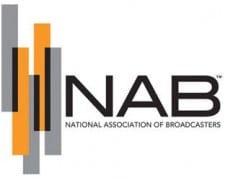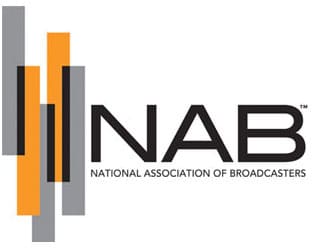 Here’s a copy of the written testimony of NAB Executive Vice President of Strategic Planning Rick Kaplan for the Senate Commerce Committee hearing (12/10), “Crafting a Successful Incentive Auction: Stakeholders’ Perspectives”. Kaplan points out the impact of repack on the viewers—and their ability to receive OTA TV. In the post-auction repacking, it is likely that many more stations will be repacked – perhaps in excess of 500:
Here’s a copy of the written testimony of NAB Executive Vice President of Strategic Planning Rick Kaplan for the Senate Commerce Committee hearing (12/10), “Crafting a Successful Incentive Auction: Stakeholders’ Perspectives”. Kaplan points out the impact of repack on the viewers—and their ability to receive OTA TV. In the post-auction repacking, it is likely that many more stations will be repacked – perhaps in excess of 500:
“Good afternoon, Chairman Rockefeller, Ranking Member Thune and members of the Committee. Thank you for inviting me, on behalf of the National Association of Broadcasters (NAB), to testify before you today.
Broadcasting, unlike any other medium, reliably offers local and national news, emergency information, sports and entertainment without charge to Americans throughout our great country. We connect people to their communities – wherever they may live – provide them with critical, lifesaving information, and embrace public service obligations that are unique to our industry. While new technologies have come and gone, broadcasting has long endured because local stations are indelibly woven into the fabric of American society.
NAB is committed to doing everything we can to ensure that the broadcast television incentive auction has the best chance for success. If done correctly, the auction could benefit consumers, public safety through FirstNet funding, and the U.S. Treasury in the form of deficit reduction. We believe there are at least three elements essential to achieving these aims.
First, as NAB has recently demonstrated, when parties engage constructively, where there is a respect and healthy appreciation on all sides for the value of various communications services, and where decisions are based on facts and data, almost anything can be accomplished. When we began working with the Department of Defense (DoD) this summer on sharing the broadcast auxiliary spectrum (BAS) at 2025-2110 MHz, very few observers were optimistic about the chances of reaching agreement, especially in the short time available. However, both DoD and NAB came to the table constructively, made a genuine attempt to understand the key concerns of the other party, and grounded our decisions in facts and data, rather than clinging to unyielding demands about the need for exclusive-use spectrum. All parties to the incentive auction proceeding, including the Federal Communications Commission (FCC), should take a page from that book, and proactively and constructively engage with an eye towards fostering consensus among the stakeholders wherever possible, and to base their positions and decisions, respectively, on facts and not merely desired outcomes.
Second, not only does the Spectrum Act require it, but common sense and consumer welfare also dictate that the FCC make all reasonable efforts to preserve non-auction participants’ coverage areas and populations served. While television viewers may inevitably lose a favorite station or link to certain news or information because a particular station volunteers for the auction, TV viewers should not lose access to channels that remain on the air as a result of an untested, sub-optimal repacking software and band plan.
Third, “crafting a successful auction” means a number of things. It certainly means that the FCC should make it as simple as possible to participate in the auction (although it does not mean actively encouraging or coercing broadcasters into participating). Crafting a successful auction also means developing a good, long-term band plan, and ensuring that rural and underrepresented consumers do not lose essential television service as a result of discounting rural or diversity concerns. Moreover, it undoubtedly means taking the time to maximize auction revenue (and thus being able to fund FirstNet) by ensuring that broadcasters along the border regions can be repacked.
Constructive Engagement
Everyone at this table understands that the voluntary broadcast incentive auction and repacking process is extremely complex. It has been called “first in the world,” “unprecedented,” “unique,” “groundbreaking,” and a host of other adjectives that make it clear we are venturing into unexplored territory. Despite the challenges of this novel enterprise, I can say with confidence that if we all work together – Congress, the FCC, stakeholders – there is a sweet spot where the auction can be a success for all involved.
NAB has been at the forefront in working collaboratively and solving problems in the incentive auction process. In this proceeding, we have worked closely with AT&T, T-Mobile, Verizon Wireless, Sprint, Google, Shure, NCTA, CTIA, Qualcomm, Microsoft, Intel and members of the public interest community to try to find areas of common ground. In our view, such collaboration is essential to a successful auction.
Where we identify a problem or concern, we propose solutions. We are always looking for areas of agreement and compromise and have been an open book for other industries and the FCC. We have shared widely our extensive data and analyses – as well as any assumptions that underlie them – and have done everything we can to listen and understand the ideas of others and share our views on the various paths to success.
As I noted earlier, this approach led us to remarkable progress in an unrelated spectrum proceeding. Despite the fact that NAB and its members had little to gain, we nonetheless worked hard to find a way, based on facts and data, to arrive at a framework with DoD officials to help free up 50 megahertz of spectrum that will benefit the wireless industry and, we hope, the greater good. This effort to help Congress, the Administration and the FCC achieve their spectrum goals demonstrates NAB’s commitment to constructive engagement, and hopefully, can serve as a model for other industries, including the wireless industry, in the future.
Protecting Viewers
Along with many others, I have worked tirelessly on this auction for well over a year. What has surprised me most during this time is that lost in the debates over competitive rules, band plans, and unlicensed versus licensed spectrum, are the tens of millions of over-the-air television viewers.
It was not that long ago – less than five years, in fact – that Congress was so alarmed about the impact of the digital television (DTV) transition on viewers, it extended the transition deadline and put significant resources into ensuring that viewers could still receive their invaluable free television services. Congress recognized that millions of consumers could lose access to channels that were critical to their everyday lives. Even with the delay and a renewed emphasis on informing every consumer, I am sure those of you on this Committee who served in Congress at the time are well aware of the many challenges your constituents nevertheless faced.
Unfortunately, the DTV transition will be a walk in the park compared to the repacking process that is part and parcel of this auction. The final channel changes of the DTV transition involved the FCC repacking only about 100 stations. Both viewers and broadcasters had more than five years to prepare for the change, and each station had a second channel on which to ensure a smooth transition. In the post-auction repacking, it is likely that many more stations will be repacked – perhaps in excess of 500 – and stations will be required to “flash cut” to their new channel – meaning there is no second channel, and stations will have to quickly move from one frequency to another, resulting in a bumpy ride for consumers.
It must be the FCC’s job to minimize the negative impact of the auction on the tens of millions of Americans who rely on free, over-the-air TV – especially those who are most vulnerable, such as senior citizens, lower-income viewers and the underserved. This entails preserving the service areas and people served by stations that remain on the air. And despite representing broadcast companies, I recommend that the FCC view this process through the eyes of the consumer, not just the station owner. If a full-power or Class A station remains on the air – and the vast majority of them will – a consumer should continue to receive that station. Some of the FCC’s proposals, however, suggest that viewers are fungible – meaning that as long as the station retains the same net number of viewers, everything is fine. But it’s the viewers that matter most, and consumers should have access to the stations they receive today after the auction, provided those stations remain on the air.
Under another proposal currently being developed, the Commission would use a “proxy” channel to calculate a station’s service area during the auction process, instead of the station’s actual channel. Thus, rather than measuring the actual interference a station will receive from another station on the channel it will operate on after repacking, the FCC will choose a different “proxy” channel to measure interference. This kind of approximation, however, cuts corners, and could result in a service loss or gain in a significantly large number of instances.
As it moves toward this auction and repacking, the Commission should not forget what has been, and will continue to be, the backbone of our communications system for local news and emergency information. Broadcast television has been there every step of the way to support your constituents, and survey after survey demonstrates that broadcast television is still what they rely upon most. It is imperative to protect viewers in this process. Let’s think about it this way: Your constituents will have no idea whether their wireless provider acquired an extra 10 megahertz in the auction to add to its 135 megahertz in their market; but I can guarantee they will start dialing your phone numbers when they are suddenly no longer able to receive the broadcast television stations they’ve relied upon for years, if not decades.
Getting It Right
A number of critical auction issues remain far from resolved. Each of these must be dealt with fully, and before an auction order is released by the FCC, for the auction to have a realistic chance to succeed. If unresolved or unduly rushed, any one of these issues threatens the success of the auction and, in turn, the quality of broadcast and broadband services for the American people going forward.
Many members of this Committee and the Senate as a whole have raised the question of how the auction will impact broadcast stations along our borders with Canada and Mexico, and what spectrum for wireless broadband will be foregone if the auction fails to account for agreements with our neighbors. As a result of long-standing agreements with Canada and Mexico, the U.S. cannot repack any stations along the borders without undertaking a formal consultation process. If the current agreements are left in place and new ones not reached, there are at least two damaging outcomes for the auction. First, the Commission will find it nearly impossible to reclaim sufficient spectrum within 250 miles of the Canadian border and 150 miles of the Mexican border, because it will be relying solely on buying out stations, as it will be unable to move them through repacking. Second, if the Commission approves an auction order without these agreements and does not deal with the border areas at this time, it will almost certainly never be able to repack stations there. Once the post-auction repacking takes place, there will be few, if any channels in the future to which border stations can be moved. The television band will already be tightly packed, essentially guaranteeing different band plans in the north and south as well as the center of the country for decades. The result would undeniably be a jigsaw, suboptimal approach.
The reality here is that without the ability to repack stations along the border, the Commission would be foregoing hundreds of millions, if not more than a billion dollars of potential revenue. So it makes little sense to forge ahead with an order, without first coming to an agreement with our neighbors. An agreement allows for a coherent repacking of television stations throughout the country, including the border regions, and, consequently, for money to flow to FirstNet and the U.S. Treasury for deficit reduction.
The impact of the auction on rural America is another important concern. We all know this auction is designed to ameliorate the alleged spectrum challenges in a handful of heavily urban markets, such as New York, Los Angeles and Chicago. No one claims, however, that rural America is facing a spectrum crunch. But what’s at stake in this auction for rural America is the elimination of television translators and low-power television stations (LPTVs) that provide service to areas otherwise unreached. In a number of markets, especially in the West, if the FCC elects to reclaim 120 megahertz of television spectrum, rather than 60 or 84 megahertz, hundreds of translators and LPTVs will be forced to go off the air. This is a serious issue that deserves serious study and consideration before the FCC makes its various policy choices.
There is one final thought I would like to offer. When Congress authorized the FCC to conduct a voluntary broadcast incentive auction in the Spectrum Act, it grounded that process in market-based principles. The authors of the National Broadband Plan believed that, in many cases, television spectrum would be more valuable in the hands of wireless carriers than broadcasters. The FCC’s job in the upcoming auction is to see if this claim is true. If the auction is truly market-based, the FCC will do this on a voluntary, non-coercive basis. Some, however, have encouraged the Commission to twist its authority to try to force broadcasters off the air. They see no problem with decimating an industry that accounts directly and indirectly for well more than a million jobs and helps drive the local and national economies, but that also is the lone communications service statutorily designed to serve the public. The Commission does not have the authority to do this under the Spectrum Act; such actions also would be unwise and severely harm the American people. To be clear: The Commission’s directive is not to push broadcasters to participate in the auction; but rather, to make it as easy as possible for them to participate if the economics make sense. That is the auction Congress intended, and that is the auction NAB will work tirelessly to help come to fruition.
We thank the Committee for assuming its oversight function in this process. This role is essential to ensuring that the Commission faithfully adheres to the statute this body crafted so carefully to achieve a balance between broadcast and broadband. I urge this Committee to continue to hold such hearings, as it sheds a much needed light on the auction process and will ultimately lead to a better result. Thank you again for inviting me here today. NAB is anxious to see a successful incentive auction and will play an active role in ensuring that happens. I look forward to answering your questions.”





